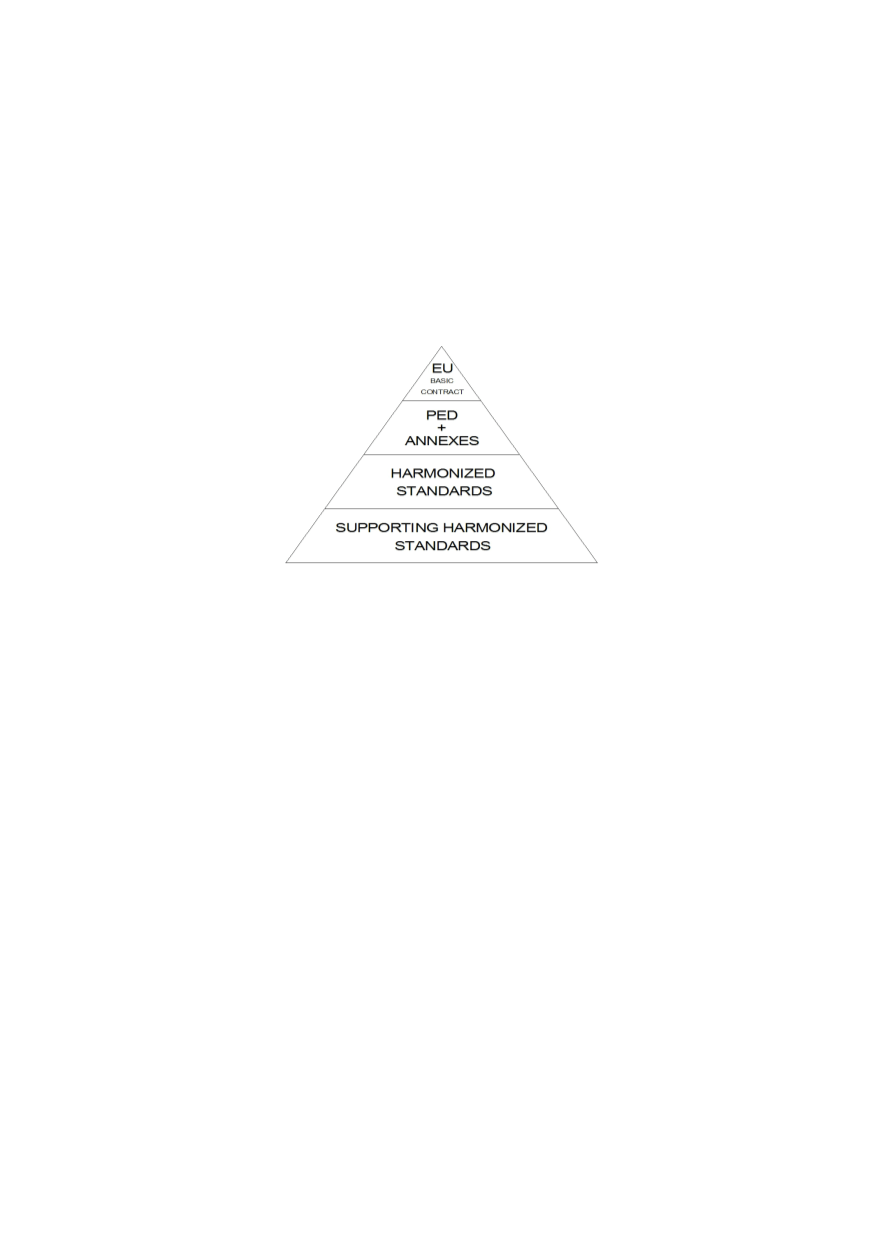

165
Manufacturer is obliged to analyze dangerous situations which are relevant to the
equipment. They have to design, produce and check the equipment in order to ensure its
safety when exploiting it in certain conditions. Moreover, they have to show and apply
the basic requirements by taking into consideration all possible circumstances.
Regarding the materials, manufacturer of pressure equipment has to fulfil basic safety
requirements by using corresponding materials which are:
–
in accordance with the European standards;
–
covered by European approved materials;
–
in accordance with the individual material specification.
Directive 97/23/EC reclines on harmonized standards and supporting harmonized
standards, as shown in Fig. 4 /4/.
Figure 4: Relation between directive and standards /4/
Harmonized standards are standards about the same subject, approved by different
institutions for standardization, which enable mutual substitution of products, processes
and services or mutual acceptance of the tests results or giving information in accordance
with standards JUS/ISO/IEC Instruction 2:2001.
Harmonized standards define technical requirements and define examination methods.
Minimal safety conditions required by PED 97/23/EC are fulfilled by using of harmo-
nized standards. Harmonized standards for equipment comprised by PED 97/23/EC are
given according to category of the equipment, at this moment for:
–
Unfired pressure vessels EN 13445 parts 1-6
–
Shell boilers of high capacity EN 12953 parts 1-12
–
Water-tube boilers and auxiliary installations EN 12952 parts 1-15
–
Industrial piping, pipelines EN 13480 parts 1-6
Harmonized standards refer to area of supporting harmonized standards, which define
requirements related to particular elements and details of methods. They are grouped to:
–
Standards for nondestructive testing (NDT)
–
Standards which define welding and allied procedures
–
Standards for materials
–
Standards for products (pipelines, forgings)
–
Standards for threaded nozzles
–
Standards for principle NDT method, connected with:
Radiographic testing - RT
Ultrasound testing - UT
Acoustic emission - AT
Eddy current testing - ET


















